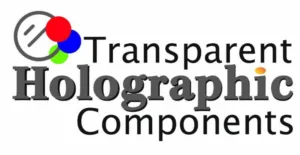Augmented Reality, blending the real world with an augmented world, requires highly advanced optics that challenge even seasoned engineers. Consumers want smart glasses and wearables to be compact, lightweight and stylish, leaving little room for conventional optics.
The same can be said for vehicular Head Up Displays where reduced volumes and flexible package designs are critical. Augmented Reality requires truly transparent optics and an unobstructed view of reality. Surface relief micro optics are too hazy, and nano optics are too costly to manufacture at consumer volumes/prices. AR requires a diffractive optic approach, with lower index contrast and higher thickness. Such properties are inherent to Holographic Optical Elements (HOEs), a technology that’s been around for decades. The unresolved challenge has been the ability to affordably mass produce HOEs for the AR market.
Luminit (Display Week booth 1633) has made significant breakthroughs in its optical mastering and replication capabilities to support advanced Augmented Reality for the wearables and automotive industries. We have the world’s only roll-to-roll platform to replicate diffractive Holographic Optical Elements at high volumes and low cost for transparent AR applications. Transparent Holographic Components (THCs) are lightweight and highly efficient components that use Holographic Optical Elements to direct light without the need for bulky optics. The process relies on microscopic variations in the index of refraction of a material to mimic the properties of positive optical lenses that can collimate or even focus light sources, replacing convex lenses, mirrors, and gratings. This volumetric holographic photopolymer is transparent and can be applied to a variety of substrates, such as glass or acrylic, producing a see-through, flat or curved optical component. Benefits of THCs include more efficient product design, larger virtual image size, reduced weight, more flexibility in packaging design and a reduction of power consumption due to increased efficiency.
Download the full presentation (it’s free), visit us at Display Week booth 1633 or email us at [email protected].

